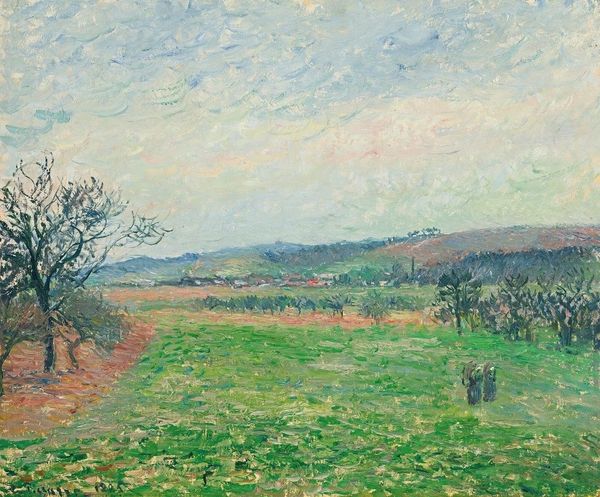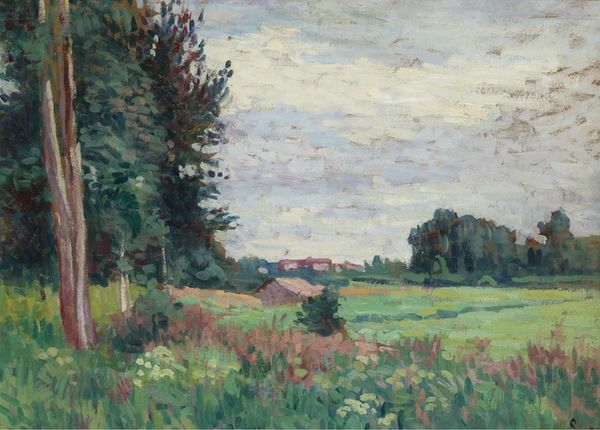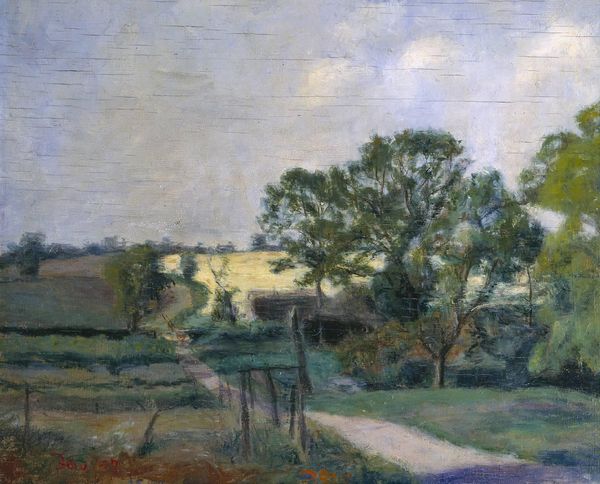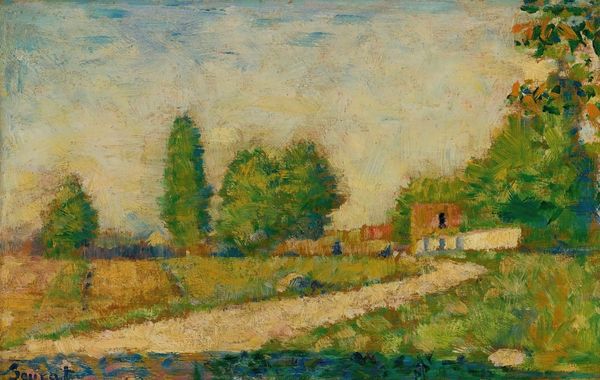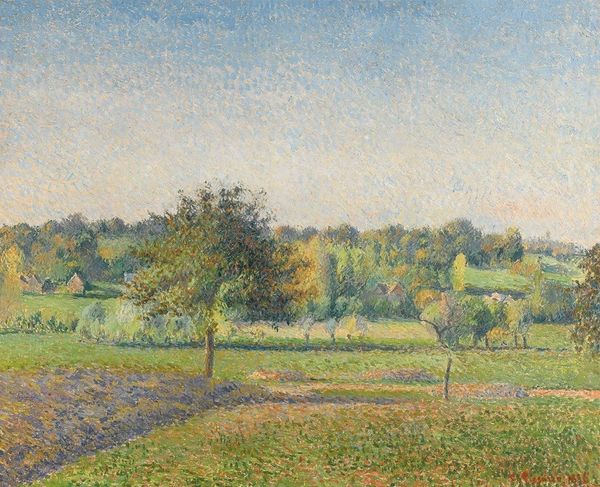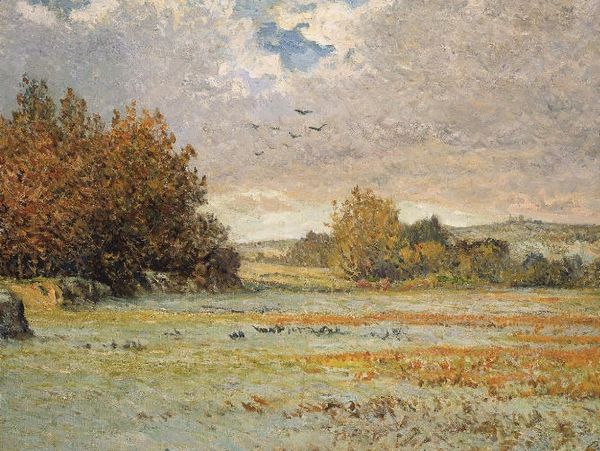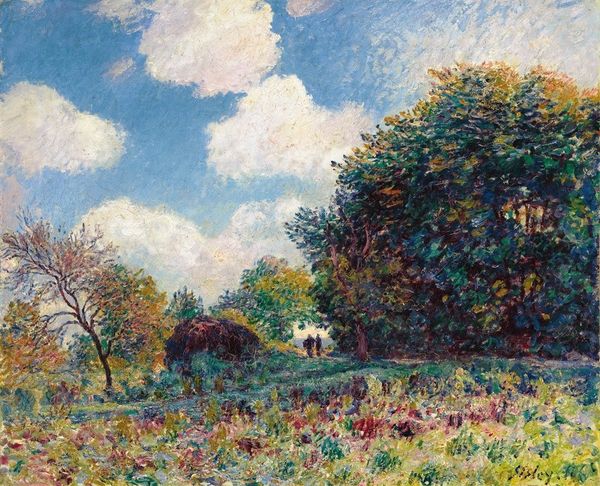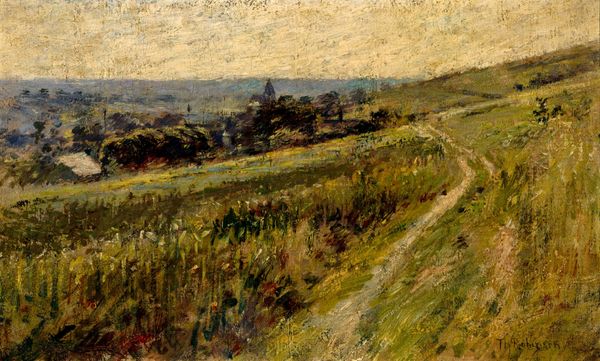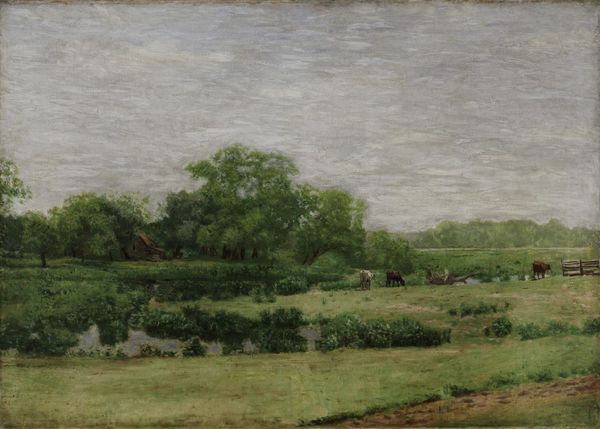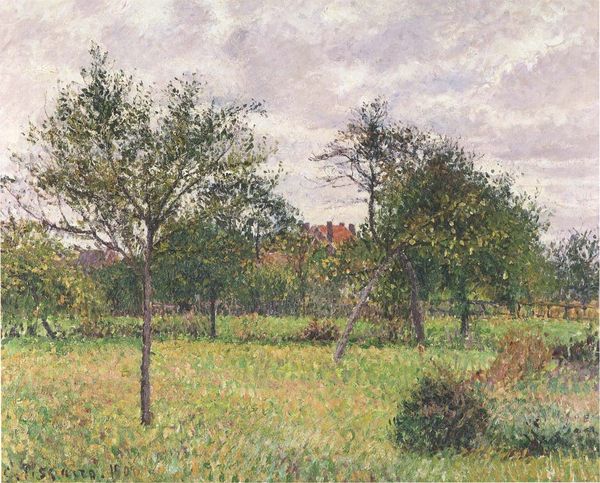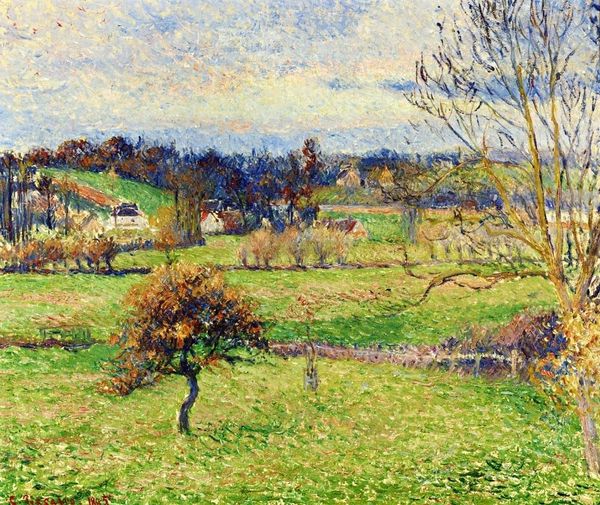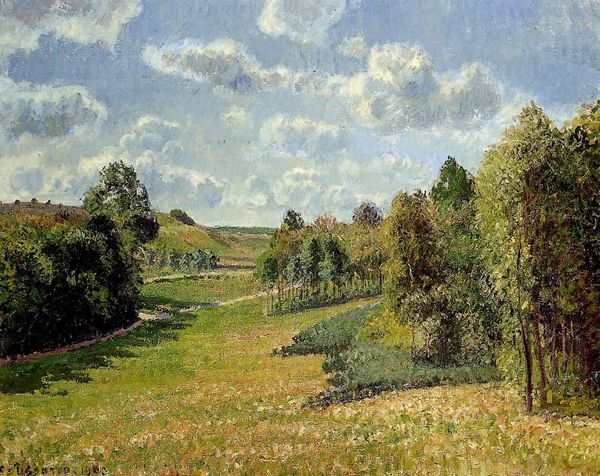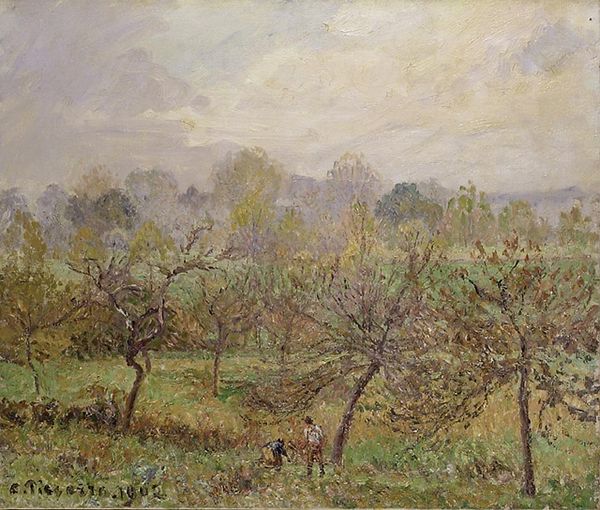
painting, plein-air, oil-paint
#
painting
#
countryside
#
impressionism
#
plein-air
#
oil-paint
#
landscape
#
impressionist landscape
#
nature
#
oil painting
#
nature
#
natural environment
Copyright: Public Domain: Artvee
Editor: Alfred Sisley’s "Landscape at Louveciennes," painted in 1873 using oil on canvas, strikes me as a remarkably subdued piece. The color palette is muted, almost melancholic, despite the pastoral subject matter. What underlying context informs Sisley's visual choices here? Curator: Absolutely. While seemingly straightforward, Sisley's impressionistic landscapes engage with complex themes tied to socio-political upheaval and environmental degradation. Consider the historical backdrop: painted shortly after the Franco-Prussian War, "Landscape at Louveciennes" embodies a desire for a return to normalcy while simultaneously reflecting the instability of the Third Republic. What emotions are evoked by this muted palette, in your opinion? Editor: I would say it brings out feelings of melancholy. Curator: Precisely. The quiet beauty of the countryside serves as a refuge from the industrializing city, yet it also evokes a sense of loss – a connection to nature already slipping away due to deforestation and urbanization. Can you identify elements in the composition that highlight human intervention? Editor: I see a pathway where people are walking, and a distant glimpse of buildings or a town. Curator: Exactly! Those elements remind us that the natural world is invariably shaped by human activities and socioeconomic factors, even within an idyllic landscape. These paintings offer subtle social critiques concerning who has access to these idyllic scenes, and how industrialization impacts working-class communities. What does Sisley’s work suggest about how we should approach nature today? Editor: This makes me think about the need to really consider accessibility when we talk about environmentalism. Curator: Precisely, these early impressionists’ depictions subtly raise the issue. It pushes us to see landscapes not just as aesthetic experiences, but as social and political spaces interwoven with issues of equity and environmental consciousness.
Comments
No comments
Be the first to comment and join the conversation on the ultimate creative platform.
